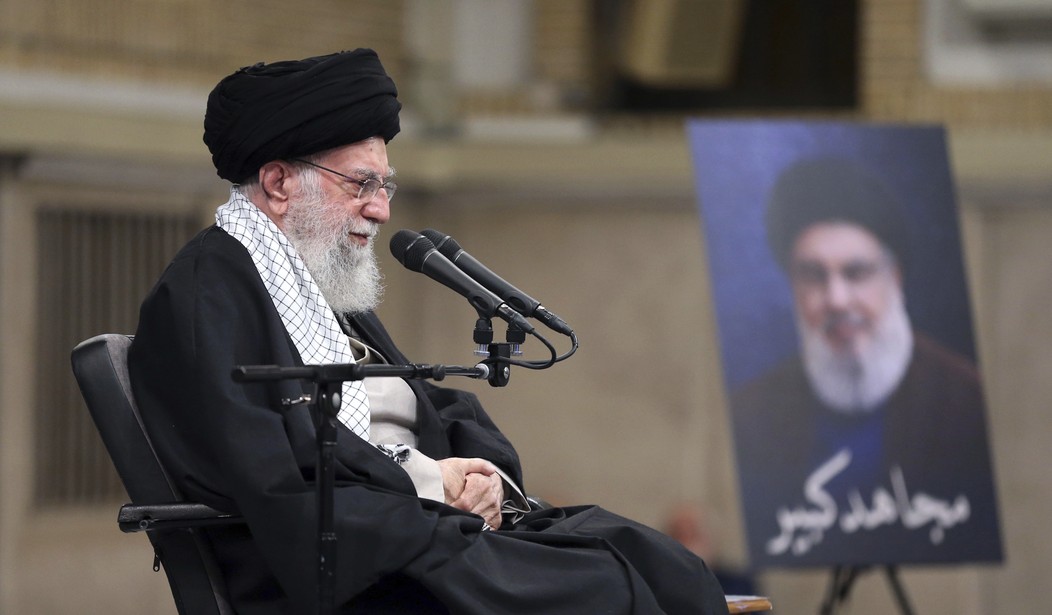The Iranian military has been ordered home from Yemen by the government in the wake of massive U.S. attacks on the Houthi terrorist group.
Since March 15, the U.S. bombing campaign has destroyed Houthi infrastructure and crippled its ability to carry out attacks against commercial shipping in the Red Sea. Iranian military personnel, including members of the Iranian Revolutionary Guard Corps (IRGC), have been recalled in anticipation of an expected military confrontation with the United States.
A senior Iranian official told The Telegraph that the move was made to avoid a direct confrontation with the U.S. if an Iranian soldier was killed. The source said Tehran's main concern was “Trump and how to deal with him."
“Every meeting is dominated by discussions about him, and none of the regional groups we previously supported are being discussed,” the source said.
It's a remarkable turn of events. Israel pulverized Hezbollah and Hamas, and now the U.S. is systematically dismantling the Houthi terrorist group. The so-called "Resistance" to Israel and the West has virtually disappeared.
Iran is right to be overly concerned with a U.S. attack. The military assets that have been sent to the region since Trump took office are sending a message to Iran that the time is now to deal with its nuclear and missile programs.
- USS Harry S Truman carrier strike group
- USS Carl Vinson carrier strike group
- Several A-10 warthogs and 300 airmen
- F35 fighter-bomber squadron
- Six B2 stealth bombers
- C-17 cargo jets
- KC-135 refueling tankers
- THAAD missile-defense system
- Two Patriot missile defense batteries
The Houthis aren't sitting still and taking a beating. They have Iranian-supplied drones and missiles and have been attacking U.S. Naval assets with great frequency. No ships have been hit yet, but The Telegraph reports that a U.S. Navy source said that "the Houthi fire was the heaviest its sailors have faced since World War II."
Biden's "hands off" policy toward the Houthis, including removing them from the terror designation list, only showed America's weakness. The bombings are the only language the Houthis and their bosses in Tehran understand.
The Telegraph's Iranian source said, “The view here is that the Houthis will not be able to survive and are living their final months or even days, so there is no point in keeping them on our list."
“[The strikes are] connected to the maximum pressure campaign that he has endorsed and he wants to simultaneously send a message to Iran and to the axis of resistance that his administration is going to take a bolder approach to destabilising regional activities," said Sanam Vakil, director of the Middle East and North Africa program at the Chatham House International Affairs.
Given heightened tensions, Iran is bracing for a potential confrontation with the United States by expanding its military footprint in the Persian Gulf, reinforcing its presence on the contested islands of Greater Tunb, Lesser Tunb, and Abu Musa with advanced missile systems and infantry units.
The Islamic Revolutionary Guard Corps (IRGC) Navy has armed its fast-attack vessels with cruise missiles, while large-scale military exercises across the region have tested Iran’s defensive capabilities and demonstrated its ability to strike enemy bases and warships. Tehran has also unveiled new long-range drones and naval assets, seeking to bolster deterrence against Israel and the US.
What's happening now in the Middle East must be very frightening for the ruling clerics in Iran. The Iranian street, never far from exploding in protest, is once again showing signs of coming to life. Israel and the U.S. are both in a threatening posture as Tehran is trying desperately to avoid giving either power an excuse to attack.
It's an even bet if the Iranian clerical-fascist regime is still in power six months from now.










